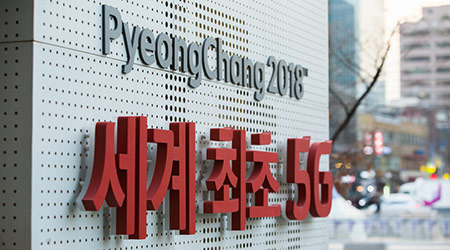
Winter Olympics will have robots to do the cleaning
The robots will assist athletes, clean venues, provide translation and even ski.
The 2018 Winter Olympics in Pyeongchang, South Korea, will be deploying robots with a range of skills that include cleaning up, serving drinks and providing language translation, according to articles on the Smithsonian Magazine and Global News websites.
Even without the Olympic spectacle, it’s not unusual to see robots cleaning the airport, teaching English and working assembly lines in South Korea. In 2016, the country sold some 41,000 robots.
South Korea's post-war focus on technology, enthusiastic consumer base, and animist religious tradition may make the populace more comfortable with non-human intelligences, the Smithsonian article said.
According to South Korea’s commerce ministry, the robots will assist athletes, clean venues, provide translation and even ski.
Media interviewing athletes already have had to avoid the robots — which are the size of washing machines on wheels, according to the Global News.
While skying robots may make news, cleaning robots are already used in facilities around the world.
For instance, cleaning robots can be seen at the Kapi’olani Medical Center in Honolulu on any given day.
The machines are vacuums and automatic scrubbers that clean the halls and public spaces. Customized to look and sound like a train, school bus and VW van, the robots have become part of the healthcare facility's daily life.
“They are known islandwide,” said Robert Crawford, general manager at Sodexo and building service contractor for Kapi’olani. “Anyone who’s been to Kapi’olani knows about the bots. You have kids and visitors leaning out the doors like they are waiting for the ice cream truck.”
South Korea's robotic team for the Olympics consists of 85 bots.
Read the Smithsonian and Global News articles.
February 12, 2018
Topic Area: Environmental Services
Recent Posts
 UF Health Hospitals Rely on Green Globes to Realize Their Full Potential
UF Health Hospitals Rely on Green Globes to Realize Their Full Potential
Case study: The process encouraged the team to push themselves in several areas.
 How Healthcare Facilities Can Be Truly Disaster-Resilient
How Healthcare Facilities Can Be Truly Disaster-Resilient
Real resilience looks different than what’s written down in plans
 AI-Driven Facilities: Strategic Planning and Cost Management
AI-Driven Facilities: Strategic Planning and Cost Management
6 factors to ensure infrastructure, operations and financial management support AI’s integration
 TriasMD Breaks Ground on DISC Surgery Center for San Fernando Valley
TriasMD Breaks Ground on DISC Surgery Center for San Fernando Valley Bigfork Valley Hospital Falls Victim to Data Breach
Bigfork Valley Hospital Falls Victim to Data Breach